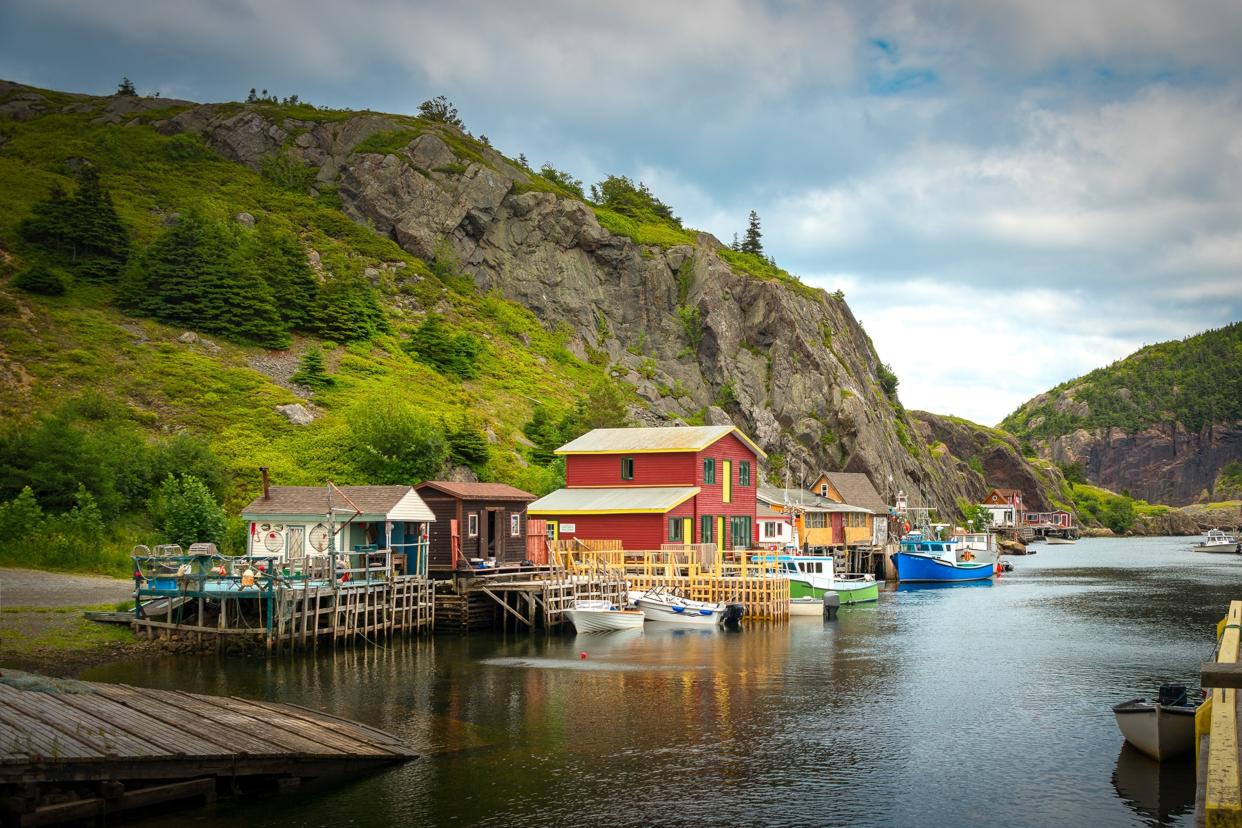
This article was produced by National Geographic Traveller (UK).
You can tell a lot about a place from the way it greets its guests. In the city of St John’s, the capital of Newfoundland, an island off Canada’s eastern coast, visitors are inducted into the city with a ‘screech-in’ ceremony — a ritual involving downing a shot of rum at a bar and reciting some local dialect, before bestowing a kiss on a glassy-eyed codfish. This welcome — a nod to the time when fish was traded for Jamaican rum — sets the tone for a destination that’s set adrift from the mainland both geographically and culturally, and where things are done a little differently.
St John’s remote location, on Newfoundland’s easterly tip, has long been part of its windswept charm. In the summer, it offers ringside seats to everything from migrating whales and puffins to colossal icebergs. But access to the city’s rugged coastline became a less arduous trek in May 2024 with the launch of a WestJet direct flight from London, taking just five hours.
Less than four miles from St John’s international airport, the city’s Downtown is supremely walkable. Since opening in 1984, the rustic Trapper John’s pub here has screeched-in around 150,000 visitors, who leave clutching a certificate proclaiming them an honorary Newfoundlander. Nearby is George Street, a spirited strip of bars and pubs where old-time folk music escapes through doorways. It’s just one of the myriad ways in which St John’s Celtic roots live on, from the lilting brogue spoken locally to the sea shanty lyrics displayed at The Rooms. This museum tells the stories of local Indigenous peoples, as well as those of the European settlers who worked the local fisheries in the 16th century, back when cod was king.
In recent years, St John’s restaurant scene has stolen the spotlight as a new wave of chefs have stepped up to the plate. Leading the charge is Terre Restaurant. Chef-owner Matthew Swift, who relocated here from Ontario, has created a hyper-local menu that sings of the sea, which happens to be visible through his dining room’s window. Choose the ‘let the kitchen cook for you’ option and they’ll roll out the culinary red carpet with raw scallops soaked in brown butter, and radishes grown in the onsite greenhouse.
Bang opposite is Portage, a neighbourhood hangout that’s gained a reputation as one of the country’s most innovative restaurants for its fusion of Newfoundland and Southeast Asian cuisine, while nearby Chinched is a deli serving nose-to-tail delicacies, including crispy pig ears. Walk your meal off with a stroll through Downtown, whose streets are lined with rows of wooden houses painted in a rainbow of colours. Legend has it that the hues guided fisherfolk back to their homes in the fog, which hangs heavy in the air during winter and spring.
On a clear day, a mile-long hike from Downtown to Signal Hill — topped by a castle-like structure that received the first transatlantic wireless message in 1901 — rewards with scenes of untamed bluffs. For those making the ascent, The Battery Cafe offers a cosy pit stop for a coffee with an optional dash of Canadian maple syrup. From the peak, follow the Ladies Lookout Trail, a feral path that snakes for just over a mile through an eagle colony, leading to the fishing harbour of Quidi Vidi. Quidi Vidi Brewery serves beer brewed using water from icebergs, alongside views of the fishing boats bobbing gently outside.
Keep your eyes peeled for moose along the roadside on the nine-mile drive from St John’s centre to Cape Spear Lighthouse. Here, two lighthouses — the original from 1836 and one built in 1955 — shine their steadfast beacons from Canada’s most easterly point out across the crashing waves. And if you’ve come all this way, consider the longer jaunt from St John’s to Fogo Island, 280 miles north, off Newfoundland’s eastern coast. Getting here will take you on a four-hour drive along stretches of coast and through Canadian wilderness, then on to a ferry. A stay at Fogo Island Inn a 29-room, standout retreat on stilts that’s revitalised this former fishing community, is worth the extra legwork.
Three highlights not to miss in St John’s:
1. Portage
The union of two acclaimed Canadian chefs — Ross Larkin and his pastry chef partner Celeste Mah — has helped to cement St John’s place on the culinary map. The likes of snow crab drizzled in lemon mayo, and banh mi salad are served in a relaxed dining room — or pull up at the chef’s table to see the kitchen in action.
2. Quidi Vidi
It’s easy to while away an afternoon in this scenic fishing village, set around a horseshoe-shaped wharf. Quidi Vidi Village Artisan Studios is the place to pick up crafts to take home, including ceramic sculptures of the region’s beloved puffins and hand-stitched quilts.
3. Fogo Island Inn
With rooms from C$1,975 (£1,340) per night, a stay at this destination hotel is a once-in-a-lifetime luxury. Come for a deep-dive into the island’s culture, with workshops covering boat building or a seafaring trip to fish for cod, followed by songs and stories around the campfire.
Published in the September 2024 issue of National Geographic Traveller (UK).
To subscribe to National Geographic Traveller (UK) magazine click here. (Available in select countries only).







